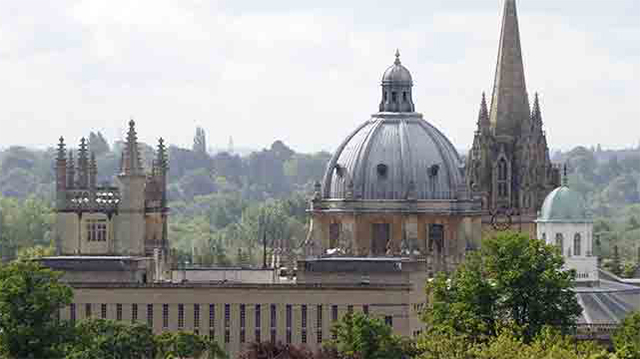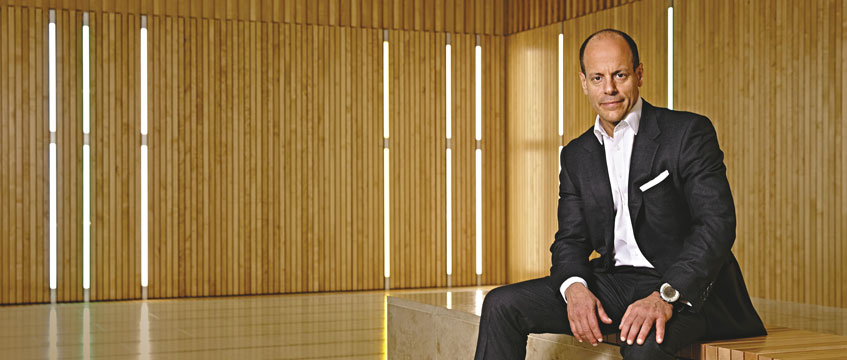Just when Belfast’s office market was shifting up a gear thanks to the peace process, the global slowdown stalled inward investment. Luckily, public-sector demand is giving take-up a push. Donal Buckley reports
The Belfast office market is slowly recovering from the global economic slowdown. Unfortunately, things slowed up for the Northern Irish capital just as the region’s economy was starting to benefit from the peace process, with US and UK firms locating call centres and IT offices there during the market peak of 1999/2000. The challenge now is to try to regain momentum.
The authorities plan to enhance Belfast’s attractiveness as a major urban location and to encourage the supply of better-quality accommodation. It is hoped that the Belfast Metropolitan Area Plan, currently being worked on, will provide guidelines and accelerate the planning process for Greater Belfast. The BMAP should also help to attract overseas investment, creating more jobs and thereby sustaining local confidence in the peace process.
In the meantime, developers and investors are looking to the public sector and professional firms to acquire whatever space comes on the market.
According to Osborne King director Stephen Bell, initial indications for the first quarter of 2002 suggest that take-up from private-sector occupiers will be significantly down this year, owing to falling inward investment. However, “a number of outstanding public-sector requirements exist, which should be fulfilled over the coming months,” he says.
Jago Brett of Lambert Smith Hampton believes that public-sector demand could push office take-up close to 2000’s level.
What private-sector demand there is will, according to Bell, come largely from local professional firms, such as solicitors, accountants and architects seeking units of 2,000-5,000 sq ft. Many of them will be owner-occupiers. Their requirement for smaller offices, he says, “has been fuelled to a large extent by low interest rates, with the added benefit of obtaining tax savings if purchased through a pension fund”.
According to Alan McKinney of Insignia Richard Ellis Gunne, owner-occupiers prefer freehold office units in the 3,000-6,000 sq ft size bracket, in the price range of £170-£195 per sq ft.
“Much of the available new space on the market has been designed to cater for the inward-investment market, with floorplates extending to 20,000 sq ft, and these are proving unsuitable for the smaller occupier,” he says. “Smaller floorplates – such as at Floral Buildings in Market Quarter and Ferguson Royston House, Wellington Place – are more likely to meet demand from smaller occupiers.”
LSH’s Brett says that combined demand from the public and private sectors, between deals pending and active requirements, amounts to 500,000 sq ft, with 80,000 sq ft already let or sold this year. In addition, there are rumours of negotiations under way for two city-centre buildings, each of approximately 60,000 sq ft.
Assuming all these deals come through this year, 2002 take-up would be up on the 475,000 sq ft that Brett says was taken up last year but down on 2000’s peak 725,000 sq ft.
Quality office space is still much in demand. While IREG’s McKinney estimates vacancy in the Belfast metropolitan area to be as high as 14%, most of this is poor-quality space, with only 1.5% – or about 97,500 sq ft – of the 6.5m sq ft of grade A space in Belfast city centre vacant.
Osborne King’s Bell paints a bigger picture. “We estimate that up to 570,000 sq ft of new-build and refurbished space is immediately available, with a further 400,000 sq ft under construction,” he says.
Bell believes that this high level of speculative development reflects developers’ confidence that the office market offers scope for rental growth and that demand will increase as UK and US economies improve.
While Michael Hannath of Lisney agrees about prospects for increased demand, in the short term he says that rental levels are expected to remain relatively steady. “Furthermore, landlords and developers are now offering higher-specification suites to try to shift the rental trend,” he adds.
LSH’s Brett offers a less sanguine view. He says developers of larger schemes are setting lower rental targets in line with the value for money being sought by government tenants.
According to Andy Tough, Belfast director of CB Hamilton Osborne King, city-centre office rents average £9 per sq ft. However, other agents point out that higher rates are being achieved from the public sector.
Hannath says that rental norms are better represented by the £11 per sq ft letting of space at Millennium House on Great Victoria Street, where the Central Services Agency took 26,000 sq ft (2,420m2), and the Department of Social Care and the Northern Ireland Office each signed up for 17,000 sq ft (1,580m2).
On the other hand, a higher rent of £12.25 per sq ft is being paid by the Inland Revenue for 17,000 sq ft (1,580m2) in the same building, but this price reflects the inclusion of air-conditioning.
The Court Service, however, another public-sector occupier, is paying only about £10.50 per sq ft for 13,500 sq ft (1,250m2) in the Headline Building in central Belfast.
In the private sector, the biggest office deal this year was awg Developments’ sale of an 81,000 sq ft (7,530m2) block in its Danesfort scheme for over £10m to Ulster Bank, the Irish subsidiary of Royal Bank of Scotland. Ulster Bank already occupies two-thirds of the block, with the rest taken by Northern Irish electricity supplier Viridian. It is believed to be paying around £300,000 pa.
|
Office availability, large space (May 2002) |
|||
|
Much of the space available has large floorplates to satisfy bigger occupiers |
|||
|
Building |
Size (sq ft) [?] |
Building |
Size (sq ft) [?] |
|
Available |
In pipeline |
||
|
Rochester Belfast, Adelaide Street |
9,000 |
College House, Citylink Business Park |
6,000 |
|
PWC, Downshire House, Downshire Place, off Great Victoria Street |
10,000 |
Venture Gate, Dublin Road |
9,000 |
|
Floral Buildings, East Bridge Street |
12,000 |
Gasworks (Insignia Building) |
10, 000 |
|
McKelvey House, Wellington Place |
14,000 |
34-36 Alfred Street |
10,000 |
|
1 Cromac Place, Gasworks, Ormeau Road |
18,000 |
Former Cawood House, Arthur Street |
13,000 |
|
22 Great Victoria Street |
20,000 |
Lesley Exchange, Mays Meadows |
18,000 |
|
14 Great Victoria Street |
20,000 |
L.A Fitness Building, Adelaide Street |
25,000 |
|
Ferguson/Royston House, Upper Queen Street/Wellington Place |
25,000 |
Imperial House, Donegall Square North |
25,000 |
|
Capital House, Wellington Place |
30,000 |
City Exchange, Montgomery Street |
34,000 |
|
Goodwood House, May Street |
60,000 |
Former Moyne Buildings, Arthur Street |
50,000 |
|
Waterfront Plaza, Mays Meadows |
60,000 |
C G U Building, Donegall Square South |
60,000 |
|
9 Lanyon Place |
60,000 |
Former Bulloch House, Donegall Square South |
70,000 |
|
Millennium House, Great Victoria Street |
70,000 |
Causeway Buildings, Bedford Street |
72,000 |
|
Source: Lisney |
|||
|
Belfast prime office rents and yields |
|
Rents have risen steadily |
|
Source: Insignia Richard Ellis Gunne Research |
|
Belfast city-centre office take-up |
|
Take-up is expected to be lower this year |
|
Source: Insignia Richard Ellis Gunne Research |










